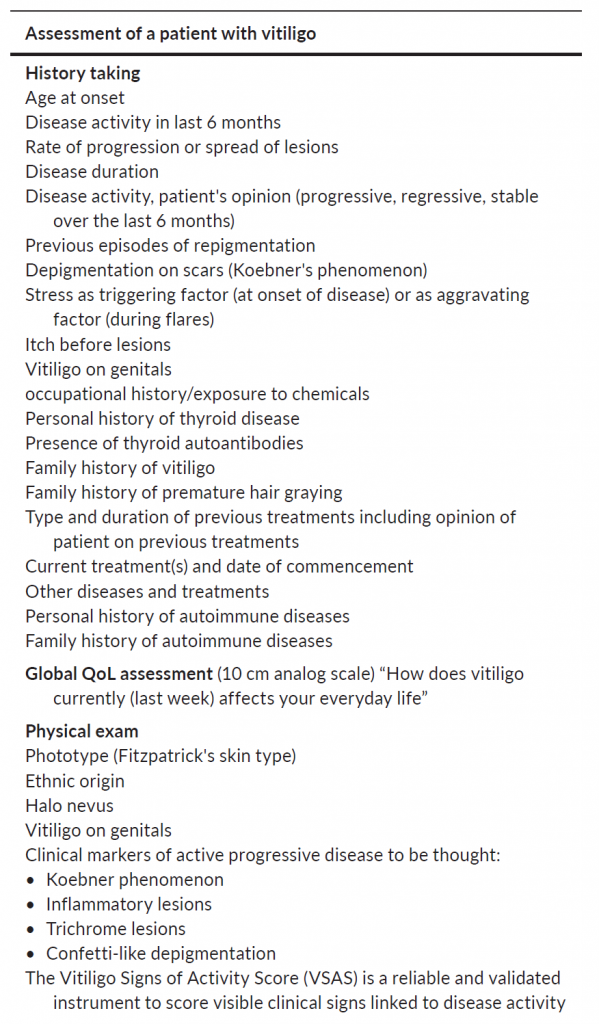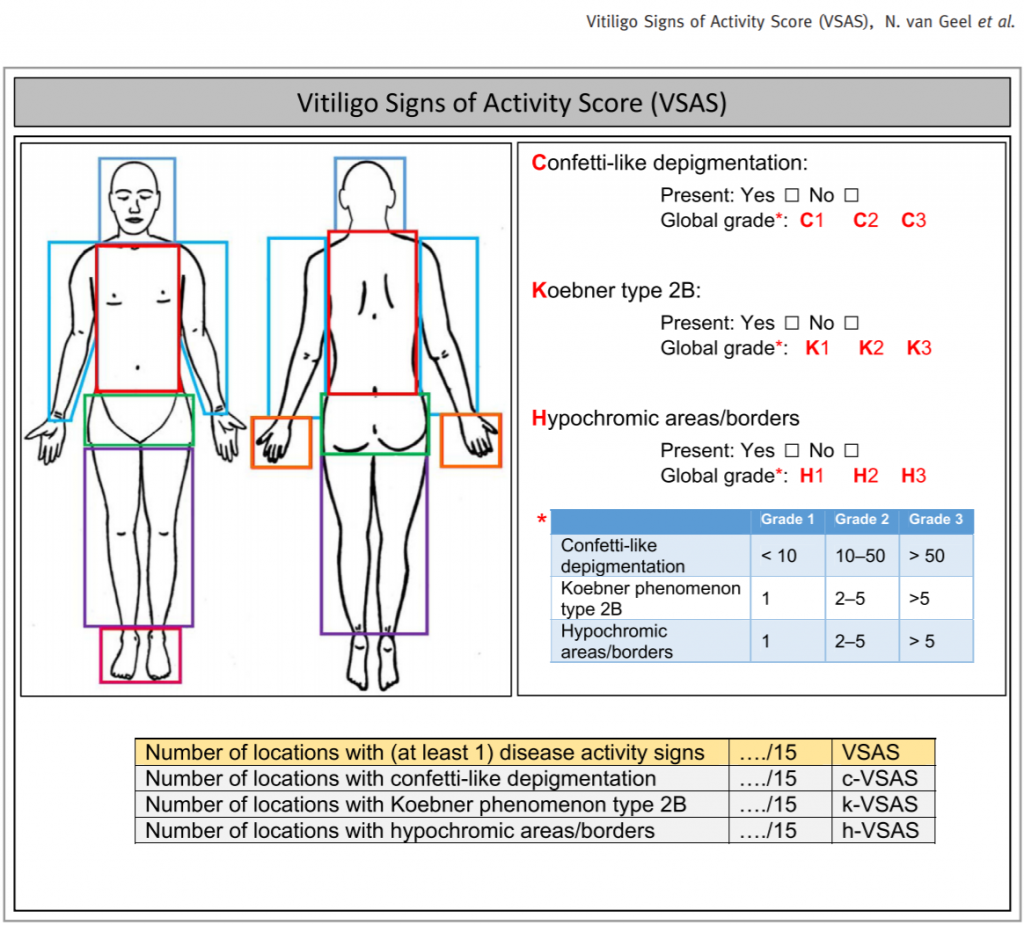Medical Assessment
Patients with vitiligo related to environmental factors can improve their condition by avoiding external triggering stress sources. For example, patients with Koebner’s phenomenon should avoid excessive pressure (mechanical stress avoidance) on the affected areas (skin/joints/muscles), carefully choose personal hygiene products, clothing (looseness/material/contact surface), occupational needs (contact with chemicals), etc.
Medical history
For example: personal medical history, family history, age of disease onset, earliest location of onset, speed of disease progression, the progress of vitiligo in the past 6 months, whether there has been any repigmentation of the vitiligo, whether vitiligo has appeared on scars, any associated stress triggers, presence of itching, whether the disease has affected the genital area, occupational history, the possibility of contact with chemical triggers, history of thyroid disease, whether blood tests have shown the presence of thyroid autoantibodies, whether family members have had premature graying of hair, past treatments received, other autoimmune diseases, etc.
Clinical assessment
For example: skin pigmentation type (Fitzpatrick’s skin type), freckles on the body, the following clinical assessment of the shape/pattern/level of vitiligo (Vitiligo Signs of Activity Score, VSAS) ... etc.
Psychological assessment and counseling
For example: personal mental condition, understanding of vitiligo, patient's understanding of the current severity of vitiligo, the impact on quality of life, psychological/social stress... etc. The patient's understanding, patience, persistence, and cooperation are especially important in the treatment journey.
Source: The Vitiligo European Task Force
Taieb A, Picardo M, Members V. The definition and assessment of vitiligo: a consensus report of the Vitiligo European Task Force. Pigment Cell Res. 2007;20:27–35.
Bergqvist C, Ezzedine K. Vitiligo: A focus on pathogenesis and its therapeutic implications. J Dermatol. 2021 Mar; 48(3): 252-270



Source: N. van Geel, T. Passeron, A. Wolkerstorfer, R. Speeckaert and K. Ezzedine. Reliability and validity of the Vitiligo Signs of Activity Score (VSAS). Br J Dermatol. 2020 Nov; 183(5): 883-890 <https://www.ncbi.nlm.nih.gov/pmc/articles/PMC7687072/>
